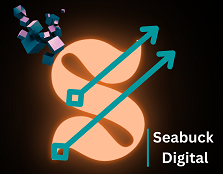
Introduction to SaaS Landing Page SEO
If you’re running a SaaS business, your landing page is the digital front door to your product. But what good is a shiny door if no one can find it? That’s where SaaS landing page SEO comes in. It’s not just about ranking higher; it’s about connecting with the right users at the right time.
What Makes SaaS SEO Unique?
Unlike e-commerce or blogs, SaaS SEO revolves around educating, converting, and retaining. The goal isn’t just clicks—it’s signups, demos, and trials. The language, structure, and even the design of your page must be tuned for this very purpose.
Why Your Landing Page Needs SEO
Your landing page might look amazing, but without SEO, it’s like a billboard in the desert. SEO drives qualified traffic, improves visibility, and reduces your dependence on paid ads.
Pre-Optimization Essentials
Define Your Target Audience
Before you even touch a meta tag, you need to ask: Who are we helping? Are they startups, enterprises, solopreneurs, or agencies? Their needs and pain points dictate your content.
Perform In-Depth Keyword Research
Not all keywords are created equal. You need terms that attract users in the decision stage, not just the curious crowd.
Use Tools Like Ahrefs, SEMrush, and Google Keyword Planner
These tools help you dig deep. Look for keywords with low competition and high intent. Terms like “project management software for small teams” beat “project management tools” any day.
Focus on Buyer Intent Keywords
Words like “best,” “top,” “affordable,” and “trial” often indicate readiness to convert. Don’t miss those.
Crafting an SEO-Friendly URL Structure
Keep URLs Short, Clean, and Descriptive
Avoid stuff like saasapp.com/home-v3/index.php?id=123. Use clean slugs:
saasapp.com/marketing-automation
Include Primary Keywords Naturally
If your tool is about email automation, your URL should reflect that. Don’t stuff keywords, but make them readable and logical.
On-Page SEO Elements That Matter
Optimize Title Tags for Relevance and CTR
Your title tag is your first impression. Include your main keyword and spark curiosity.
Example: “Automate Email Campaigns with Ease | Try Our SaaS Tool Today”
Write a Compelling Meta Description
This isn’t just for search engines—humans read it too. Make it actionable, benefits-driven, and keyword-rich.
Use Proper Header Tags (H1 to H4)
Only one H1 per page. Then break down your sections with H2s and H3s. It helps users and Google crawl the page easier.
Include Your Focus Keyword in First 100 Words
Get to the point quickly. Don’t bury your keyword in fluff. Tell them what the page is about, fast.
Maintain Keyword Density Without Stuffing
Stick to 1–2% keyword density. Instead of repeating the same phrase, use LSI (Latent Semantic Indexing) terms and synonyms.
Content Optimization for SaaS Landing Pages
Speak to Pain Points and Offer Solutions
Your copy should scream, “We understand you!” Don’t just describe features—highlight the outcomes.
Use Clear, Benefit-Driven CTAs
Don’t say “Click Here.” Say “Start Your Free Trial” or “Schedule a 10-Min Demo.” Be direct, be helpful.
Optimize for Featured Snippets
Answer questions clearly. Use lists, bullets, and short paragraphs. Google loves content it can turn into a featured snippet.
Incorporate FAQs and Structured Data
Add a small FAQ section at the bottom. Mark it up with Schema.org FAQPage for enhanced SERP visibility.
Visual and Technical SEO Factors
Optimize Image Alt Text
Every image should have descriptive alt text with relevant keywords. It helps with image SEO and accessibility.
Use SVGs or WebP for Faster Loading
These formats load faster and look cleaner across devices. Speed = better rankings.
Enable Lazy Loading for Media
Images below the fold should load only when the user scrolls. This improves page speed and UX.
Mobile-First Design and UX
Use Responsive Design Principles
Over 60% of SaaS traffic is mobile. Your site must adapt seamlessly to any screen size.
Avoid Popups That Disrupt UX
Intrusive popups hurt user experience—and Google penalizes them. Use slide-ins or exit-intent popups instead.
Ensure Buttons Are Tappable and Clear
Don’t make users pinch to zoom. Use large, bold buttons with clear CTA text.
Page Speed and Core Web Vitals
Compress Files and Minimize Code
Use tools like Gzip, Brotli, and minify your CSS and JS. Every millisecond counts.
Use a CDN for Global Speed
If your visitors are global, your assets should be too. Use Cloudflare, Fastly, or StackPath.
Monitor with Google PageSpeed Insights
Test regularly and keep an eye on LCP, CLS, and FID metrics.
Internal and External Linking Strategy
Link to Relevant Resources on Your Site
Guide users deeper into your ecosystem. Link to blog posts, pricing, or comparison pages.
Secure Authoritative Backlinks
High-quality backlinks from SaaS directories, reviews, and niche blogs boost trust and rankings.
Schema Markup and Rich Snippets
Add SaaS-Specific Schema Types
Use SoftwareApplication schema to highlight your features, pricing, and offers in search results.
Boost Click-Through with Rich Results
Structured data helps your snippets shine—stars, FAQs, prices—all catch the eye.
CRO and SEO: A Combined Approach
A/B Test Headlines and CTAs
Use tools like Optimizely or Google Optimize. Test, tweak, repeat.
Use Heatmaps to Analyze Behavior
Crazy Egg or Hotjar reveals where users click, scroll, or bounce. Fix drop-off points.
Minimize Friction in Signup Process
Short forms convert better. Reduce required fields and offer SSO (Single Sign-On).
Conversion Tracking and Analytics
Set Up Google Analytics and GA4
Know where your traffic comes from and what they do on your page.
Use UTM Parameters to Track Sources
Want to see which campaign converts? Use UTM tags on every link.
Common SaaS SEO Mistakes to Avoid
Ignoring Technical SEO
Broken links, duplicate content, and crawl errors can tank your rankings.
Forgetting to Optimize for Mobile
If your mobile UX sucks, users bounce—and Google notices.
Using Generic, Non-Specific Copy
Be niche. Speak their language. Vague content won’t rank or convert.
The Role of AI and Automation in SaaS SEO
Use AI for Content Personalization
Tools like ChatGPT (wink wink) can tailor messaging based on user behavior and segments.
Automate Audits and Reporting
Platforms like Surfer SEO or Screaming Frog help you stay on top of issues with minimal effort.
Ongoing SEO Maintenance Checklist
Regularly Update Landing Page Content
Keep testimonials fresh, update CTAs, and refresh any outdated claims.
Monitor Rankings and Make Adjustments
Stay agile. If a keyword drops, tweak your content, improve internal links, or boost backlinks.
Continue Link-Building Efforts
It’s not a one-and-done game. Keep building relationships, pitching guest posts, and earning mentions.
Conclusion
SaaS landing page SEO isn’t rocket science—but it does take effort, consistency, and a solid roadmap. By following this practical checklist, you’re setting your landing page up for visibility, credibility, and most importantly—conversions. Whether you’re a startup founder or a seasoned marketer, a well-optimized landing page is your SaaS product’s best salesperson—available 24/7.
FAQs
What’s the ideal word count for a SaaS landing page?
Aim for 800–1,500 words, balancing SEO and readability. Don’t fluff—focus on value.
Can I rank with just one landing page?
Yes, but it’s tougher. Supporting pages like blog posts, use case pages, and integrations help.
How often should I update my landing page SEO?
Check it every 3–6 months or whenever you release new features or offers.
Should I include a blog on my SaaS website?
Absolutely. A blog can support your landing page with internal links and long-tail keyword targeting.
Does bounce rate affect my landing page SEO?
Indirectly, yes. High bounce rates can signal poor UX or irrelevant content, which affects rankings.
Read More:
How to Build Links from SaaS Directories
Ultimate Guide to Link Building

